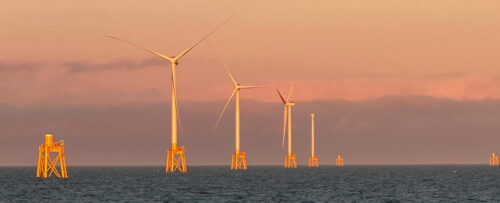
Report | 2024
Philippine Market Movers: An analysis of three high potential areas to accelerate the offshore wind market in the Philippines
With over 36,000 kilometers of coastline and an estimated total technical potential of 178 gigawatts (GW), offshore wind is gaining attention in the Philippines to improve energy security, lower electricity costs, reduce greenhouse gas emissions, and promote economic growth. With the expected depletion of the Malampaya natural gas field — which supplies fuel for roughly 20 percent of the country’s electricity — by the end of the decade, a looming energy crisis has highlighted the need for accelerated large-scale renewable energy development.
To show the government’s commitment, the country has set a goal of sourcing 35 percent of its energy from renewable sources by 2030 and has directed the Department of Energy (DOE) to establish the policy framework for offshore wind development. As of April 2024, DOE had awarded 92 offshore Wind Energy Service Contracts (WESC), accounting for a total potential capacity of nearly 65 gigawatts, signaling growing interest in a quickly evolving Philippine offshore wind market.
However, despite these strides, only a few offshore wind projects are in the development pipeline and expected to be completed by the end of the decade. To build momentum in the market’s first movers, this report studies offshore wind development areas that show promise for the country’s first offshore wind projects (i.e., operational by 2035) and the country’s next wave of offshore wind development.
This pre-feasibility analysis of three high-potential offshore wind development zones located near Manila Bay, Tayabas Bay, and Guimaras focuses on zones that can accommodate fixed-bottom installations to support the current administration’s 2030 renewable energy target. These three zones were chosen for their high wind speeds of greater than 7 meters per second; proximity to major load centers in southern Luzon and western Visayas; areas with relatively shallow water depths that allow for fixed foundation wind turbine designs for the market’s first project; availability of nearby potential assembly ports; and access to deeper areas for floating offshore wind farms.
Given that 90 percent of the Philippines’ offshore wind technical potential is in deep waters, it is assumed that the long-term offshore wind market in the Philippines will need to focus on floating foundation turbines. By studying three zones that warrant both fixed and floating foundation development, the infrastructure investments, marine spatial planning, social and environmental coordination, and learnings from the first fixed foundation projects can apply to and support the development of longer-term floating offshore wind projects in adjacent areas.
This analysis includes location-specific information such as available wind resources, bathymetry, environmental impacts, social impacts, competing uses, site access via ports, and points of interconnection. The report also includes an overview of offshore wind development and equipment costs and considerations, a summary of the legal and regulatory landscape pertaining to offshore wind, and a discussion of relevant stakeholders who are vital to a healthy offshore wind market.
The Philippines, with its promising wind potential and high electricity costs, is an ideal market to catalyze the offshore wind industry across Southeast Asia.
About the project
RMI, in partnership with Aboitiz Renewables and the Southeast Asia Clean Energy Facility (SEACEF), and funded by the United States Trade and Development Agency (USTDA) and Tara Climate Foundation, released Philippine Market Movers in support of the Philippine government’s push for renewable energy development in the country.